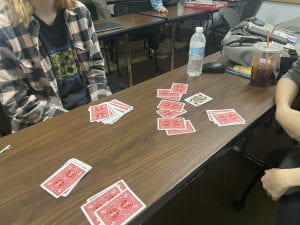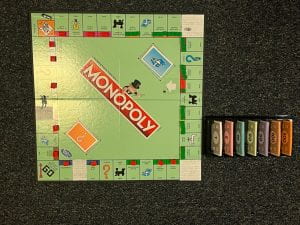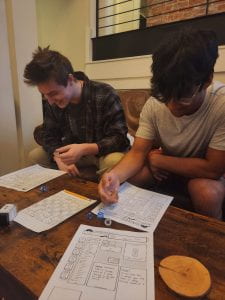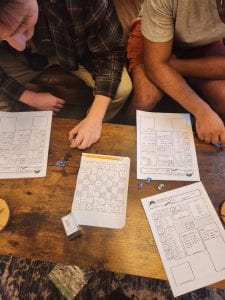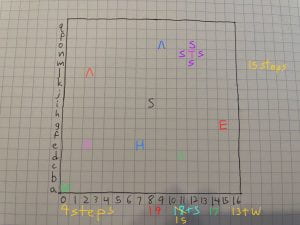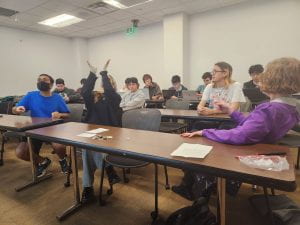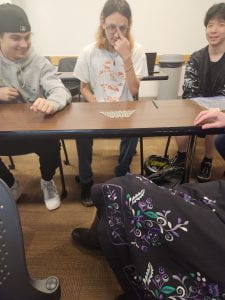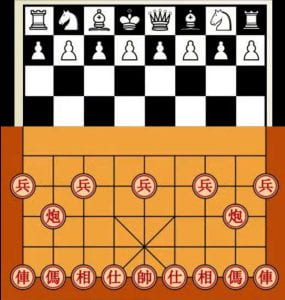
Rules:
- The rules in each half follow the respective chess rules.
- Western Chess Rules: https://en.wikipedia.org/wiki/Rules_of_chess
- Eastern Chess Rules: https://en.wikipedia.org/wiki/Xiangqi
- Since the two chess sets use different mapspace, thus when crossing the border, players can decide which near line/grid they want to enter.
- Rooks, Queen, Chariots, Canons, and Bishops will need to take a turn to pass the midline, while knights and horses don’t.
- Western pawn can be promoted into any eastern chess piece besides the general when it reaches the end, and eastern soldiers can be promoted into any western chess piece besides the king when it reaches the end.
- King can no longer cross the middle line
This appropriation is inspired initially from Duchamps and his chess art pieces. The concept of this appropriation is to demonstrate aesthetic and cultural differences between western chess and eastern chess where both of them were adapted from the same origin. The game deliberately let the chess pieces follow the moving rule of the respective board space they are in because there is an old saying in both western and eastern cultures called “When in Rome, do as the Romans do” (or ru xiang sui su in Chinese). Both of them mean when visiting a foreign land, follow the customs of those who live in it. Also, taking an extra step to cross the middle causes it to be very difficult to move one’s piece to the other side because it will be relatively easy for the opponent to defend, which somehow demonstrates that it is very difficult for a culture to enter another.
Gameplay wise, since these two chess sets have different pieces and different amounts of pieces, this game will be an asymmetrical PvP game. In respective of game balancing, for the western sides, it has 3 less special pieces (pieces besides pawns), but it has the queen which is the most powerful piece amongst all. Moreover, bishops & knights are similar but stronger than elephants & horses where knights will not be blocked by other pieces like horses do, and bishops can move in any amount in a diagonal but elephants can only move 2 grids in diagonal. For eastern sides, it has half of the amount of soldiers compared with western pawns, but they are a bit more powerful because they can capture forward or horizontal when they cross the middle where pawns can only capture in diagonal. Eastern chess has advisors and canons but advisors can only move in the 9 grids surrounding the general which has no use in offending, and canons are not as powerful as the queen. In short, western chess has less special pieces but they are more powerful and it has more pawns, whereas eastern chess has more special pieces but less powerful, and less pawns(soldiers) but a bit more powerful. Therefore, the gameplay is somehow balanced.
During the playtesting, I found that the game is relatively stagnant since it is difficult to cross the middle line, so I want to give more power to certain pieces to make the gameplay more engaging and offensive. The knights and horses are a good choice because they will not be overpowered like rooks or chariots if they can cross the middle line without taking an extra turn. Also, kings can no longer cross the middle line just to remain symmetric with the eastern general.
Disclaimer: There are no political implications in any form, anyhow, anywhere in this game.
Playtestings
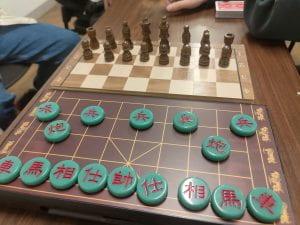
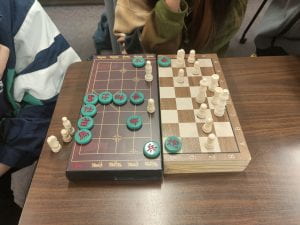
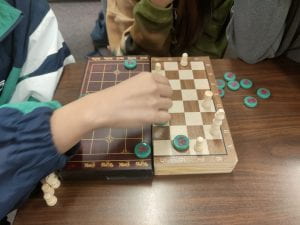
Other Variation (Speed Chess + Extend the board by 4 rows, the middle line now is between 2-3 on the western board)

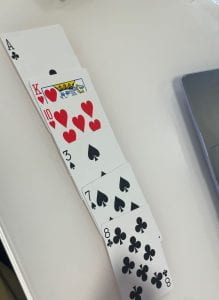 ,if the next player place a card that is either A,K,10,3,7,8- He can take all the cards in between the 2 matched cards.
,if the next player place a card that is either A,K,10,3,7,8- He can take all the cards in between the 2 matched cards.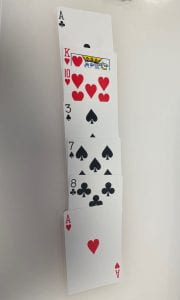 Forexample, this player draws the Ace card from his deck, he wins all the cards between the 2 Aces.
Forexample, this player draws the Ace card from his deck, he wins all the cards between the 2 Aces.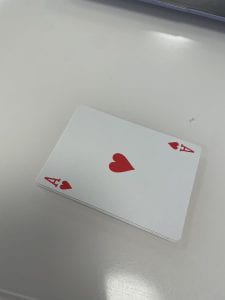 These cards will needs to be shuffled and put it under the winner’s deck
These cards will needs to be shuffled and put it under the winner’s deck